The Type 23 programme originally arose in the late 1970’s, at the height of the Cold War.
At the time Britain was locked in a pre-apocalyptic arms race with the Soviet Union, and thus all developments across the three services were geared to one thing: World War III. In few places was this more keenly felt than the navy, for whom this mean open-ocean symmetrical warfare against the Communist forces.
To be precise, Anti-Submarine Warfare. This was due to the fact that Western war plans were centred on the concept of a submarine rush through the GIUK (Greenland-Iceland-United Kingdom) Gap.
The Soviet navy was very much based around deepwater submarine operations, and was building up a formidable fleet of SSNs- Nuclear-powered attack submarines. Their naval tactics were centred around flooding the Atlantic with these hunter-killer boats, sinking Military and Merchant ships alike. While surface ships did of course feature, they existed to follow the submarine squadrons in, supporting them and mopping up with anti-ship missiles and light air cover (the Kiev class is an excellent example of this, a jack-of-all-trades pocket carrier/ guided missile platform intended to support SSN operations).
This was in sharp contrast to the US navy, which at the time was building a more balance force centred around Carrier Battle Groups. As the first in the firing line, Britain would have to change- and so in the 70’s, we did.
Having already lost our battleship in 1960, we now focussed on cutting the large, catapult-equipped carriers and instead moved towards dedicated anti-submarine operations. This we did, instead designing a three-ship class of light ASW carriers, the legendary Invincible Class, which initially were envisaged to be primarily helicopter equipped, flying the equally legendary Sea Harrier for the purposes of air cover, primarily not against Soviet naval aviation but long-range Maritime Bombers. So, this is how things stood in the late 1970’s: ASW operations, ASW operations and ASW operations.
Naturally, the centre of these plans would be the Frigate. Whereas our destroyers (at the time, the Type 42 Sheffield class) were designed for anti-air warfare, playing escort to the carriers, frigates would be the hunters of the force, ranging far and wide to track and kill the ‘reds’. At the time, we operated three classes of frigate: the venerable Leander Class, dating back to 1960, which had been the one-size-fits-all post-WWII frigate which was now specialising in the submarine work with a class of 26 vessels, the 1974 Type 21, a more general escort with a more modern design and a class of 8, and the upcoming Type 22, a fully specialised sub hunter that was under construction in the late 70’s with a class of 14.
The plan was design a light ASW frigate that would be able to act in support of the larger Type 22, providing the wide coverage that was all-important to ASW operations. The intention was for this to be a fully specialised ship, with a towed array- the latest must-have convenience for the modern sub hunter- and be able to carry a small helicopter to deal with them. It was to be given no defensive armament, a rather staggering prospect to today’s world of multiroling, and was envisaged to be fielded in squadrons of four.
Each of these far-ranging units would be supported by a Fort Victoria class replenishment vessel, which would be operating as a sort of catch-all mothership, providing air cover with Sea Wolf AA missiles and with hangar facilities to service the helicopters of the frigates (something that the ships themselves would be lacking). But, perhaps fortunately, this never came to pass.
In 1982, the Argentine Junta invaded the Falklands Islands, a far-flung British colony in the South Atlantic. When the taskforce sailed, they rapidly found themselves under air attack, and the loss of several vessels and the damaging of several more rapidly made several things clear:
- Aircraft still indisputably posed a threat to ships.
- Centralised Air Defence may not be enough: ships would need the ability to defend themselves.
- The Argentine anti-shipping attacks had come in two forms: the Exocet, a terrifyingly effective and very modern sea-skimming missile that would require up-to-date tracking measures to detect and modern interception technology to take down, and older conventional bombing. While we were immensely fortunate in that very few 1000pd bombs dropped actually detonated (if the argentine air force had realised the fuse problem at the beginning of the war then subsequent events would have been very, very different) there was still a salient point there. What this proved was that air defence was simply crucial for vessels.
After the war, the Type 23 program rapidly began to evolve. First to appear was the very significant decision to include a VLS (Vertical Launch System) equipped with Sea Wolf, which in turn meant a larger radar and tracking suite, which would be crucial for dealing with anti-ship missiles. With the ship growing to accommodate the VLS and the extra super structural equipment, the two main additions were placed in to make this once and for all a larger and more complex design: a multirole Naval Gun (something that had proved its worth for anti-shore work in the Falklands) and a hangar, which was a simple practicality now that the hull size had grown.
With a gun, hangar and VLS added, followed shortly by a Harpoon system, the Type 23 had become a large all-rounder that, while maintaining its ASW capability, had become a self-contained vessel in its own right- and the rest, as they say, is history. Surfing on the wave created by rapid rise of pro-Naval sentiment in parliament created by the Senior Service’s time in the limelight during the Falklands (including the tearing up of the 1981 review, but that’s a story for another day), the ship had become a colossally flexible vessel that now eclipsed the Type 22 itself- primarily because it had been amended post-Falklands, which meant that they could work with an essentially clean slate. Overall 16 were built, with the class being named the Duke class after the common theme of the names being, you guessed it, Dukes.
The first ship, Norfolk F230, was laid down in 1985 and finally launched in 1990, and the final ship, St. Albans F83, was launched in 2002. By that point the Berlin Wall had fallen and the Cold War had ended, meaning that the focus would once more shift towards more general naval operations. It is this that makes the Type 23 so interesting as it was designed during the Cold War yet launched and operated entirely after it- and so these post-Falklands design changes, seen in the ASW navy as being somewhere between useful but not necessarily and overly complicated were now the reason that the class had been saved. By diversifying its capability, the Government had unwittingly secured its future.
The Type 23 displaces a total of 4900 tons, with a length of 133m, a beam of 16.1m and a draught of 7.3 metres. This can be compared to the Type 22 Batch 3 (in many ways a similar vessel, though without a VLS), displacing 5300 tons and 148.1m long, the Type 21, 3360 tons and 117m long, and the Leander class, 2962 tons and 113.4m long. The Type 23 has a complement of 185, relatively low for the period, which was largely due to experiences in the Falklands.
The Type 23 is propelled by a CODLAG Diesel-electric/gas system including four diesel generators and two Rolls-Royce Spey turbines, as used in the Type 22, not to mention frigates and destroyer export orders worldwide. The given top speed is 28 knots, although Sutherland has achieved 34.4 knots under trials. The range of the vessel is 7500 nautical miles at 15 knots, a vast improvement over the 1200 nm of the Type 21. This endurance is crucial to the role that the T23 occupies in the modern day- more of that later.
The most noticeable item that the ship is equipped with is the BAE Mark VIII 4.5” Naval Gun. It is essentially identical to that operated by the Type 42 and 45 destroyers. Between 2005 and 2012, the 13 remaining ships all had their guns upgraded to the Mod 1 standard by Babcock Marine, noticeable for its stealthy design. The ships are also currently having their DS30B 30mm guns replaced by the newer DS30M, designed for close-in defence against fast moving attack craft.
The anti-air warfare is provided by a 32-cell VLS system designed for the Sea Wolf missile system. The original Sea Wolf (of Fort Victoria intention) was in a non-VLS launch design, which was problematic due to the issue of the hull of the ship getting in the way of the missile launch (another problem identified in the Falklands).
With a VLS (a new innovation for the 80’s and famed for it’s key role in such famous designs as Arleigh Burke), the missiles could clear the hull of the ship before igniting, vastly improving the anti-capability over the originally planned conventionally launched missiles. Considering that the ship was intended to have no anti-air capability at all, that is rather impressive! Currently, the Sea Wolf missiles are being replaced by the newer Sea Ceptor CAMM design, notable for the fact that four missiles can fit into one Sea Wolf VLS tube. This gives Type 23 excellent self-defence AA coverage.
The anti-submarine capability is provided by Stingray anti-submarine torpedoes, fired from two tubes. In addition to that, the Type 23 can carry a single Merlin HC1, the airborne submarine hunter of the Royal Navy and sometimes quoted as the ‘flying frigate’ for obvious reasons. The Merlin is equipped with dipping sonar, sonobouys and depth charges, ideal for ASW operations.
The anti-shipping capability is provided by the ubiquitous Harpoon missile, a US designed anti-ship missile was originally launched in 1977 and since then has provided both the US and Royal navies (not to mention many others) with excellent anti-surface capability- made all the better by the fact that the missiles are stored in simple bolt-on racks rather than a more complex deck-penetrating VLS system, which would potentially make reloading a more complicated affair. The Type 23 has two of these four-missile racks.
Currently, the Type 23 is undergoing as a class the replacement of the older Type 996 radar with the newer and far more capable Type 997 Artisan 3D radar system. This is reportedly 5 times more capable and will also be fitted to the Queen Elizabeth and Albion classes. The ships are fitted with two Marconi Type 991 systems for fire control, linked up to the aforementioned Sea Wolf system. This provides vastly superior radar coverage to anything that we operated in the Falklands, and will be the key to identifying and downing any incoming offensive action in any future conflict.
In the ASW department, the ships are also fitted with a Thales Type 2050 bow sonar array. In addition to this, five of the Type 23s are equipped with Type 2031Z towed sonar arrays, with the other eight bringing Type 2087 to the table. Factor in the airborne ASW capability, and the end product is a vessel with simply superb anti-submarine capability that leaves us in absolutely no doubt as to what it was originally designed for! Kelvin Hughes Type 1007 and Racal Decca Type 1008 provide navigational coverage, with the Sea Archer 30 being in charge of fire-control. The CMS, or Combat Management System, is provided by BAE Systems with the Command System DNA.
Throughout its lifetime, the Type 23 frigate has been at the forefront of British overseas activity. They are regularly used in drug-interdiction raids in the Caribbean, with raids netting millions in cocaine or heroin. They have been used in disaster relief operations in overseas territories and beyond, and even in the evacuation of British civilians from Libya in 2011 during Operation Ellamy.
Over the last 20+ years, whenever a British carrier or assault ship has left port, there has always been a Type 23 to be seen nearby, prowling the surrounding waters.
They have been true messengers of British strategic intent, and will continue to do so until 2036, when the new Type 26 Global Combat Ship- Type 23 on steroids would be a pretty good way of describing it- will replace the last ‘Duke’ class. The fact that that is another 24 years away shows that the best out of this excellent piece of British design is still undoubtedly yet to come, and Amen to that!


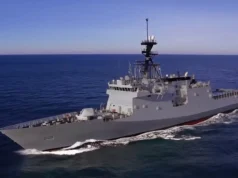
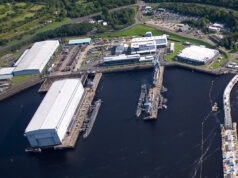

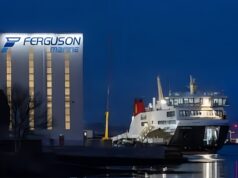
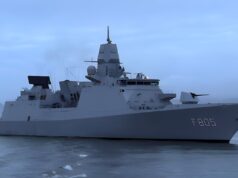
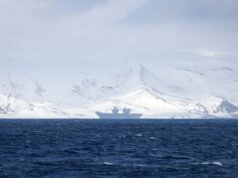
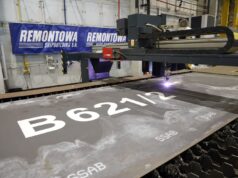
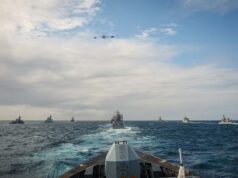



‘(if the argentine air force had realised the fuse problem at the beginning of the war then subsequent events would have been very, very different)’
The failure of iron bombs to explode is not uncommon.
with the upgrades to the main gun – sea ceptor – radar etc perhaps we should be looking at extending the service life of the type 23 to increase hull numbers in the fleet – they seem to be capable enough ships perhaps we could even buy a few new harpoons – dont need many of them – we dont exactly fire these things that regularly and would do until whatever new missile we are developing comes online
John, the upgraded Type 23s will be able to provide superior aa defence out to about 40 km. The anti-submarine prowess of those equipped with 2087 is well-documented. Their new helos with their forthcoming short range ASuW missiles should be very effective, too. Harpoon is obsolete and should be replaced with an entirely new system. Our big problem is that there are not enough of these ships and they are getting worn out. I’m hoping that new build Type 26s and then Type 31s will be readied in time for one for one replacement. It’s possible but the government needs clarity of thought and action. Examination of Hansard suggests that senior members of the government struggle to understand the details of this issue. They dont have clarity of thought so their actions will likely be muddled. I’m trying to be optimistic about this but I’m, frankly, struggling.
Here is an idea why do we not simply update the type 23 design with modern equipment and build a few new ones then call it the type 31 frigate? They could then be upgraded if needed with 2087 sonar if required to cope with an enhanced ASW requirement.
A modernised type 23 made into type 31 would be ideal.
5 inch main gun
sea ceptor
1 phalanx or RAM atop the hangar
2 x 30mm guns
Norwegian ASM in 4 cell canisters x4.
Hangar for merlin but actually take wildcat
MT30 gas turbines. Reduced crew requirements etc would give a complement of circa 98 to man an updated type 23 design. Whatever happens to the type 31 design it must be capable, cheap enough to become a polyvalent unit and have lean manning. Very difficult design to pull off.
Why do you need Phalanx?
If the ships design is stealthy and you have adequate soft kill such as Sea Gnat and DLF you don’t need more Hard Kill.
Sea Ceptor is adequate if it is equal to or better than the Sea Wolf it is replacing. If Sea Ceptor can hit a 4.5 inch shell in flight and drop a sea skimming target then you don’t need more Hard Kill.
Phalanx would be top weight which is something that you want to get rid of.
You can only go so far with a reduced crew. 98 would not be sustainable. 180 odd on a fully capable deployed T23 is very hard work with most people double or triple hatted for jobs . At Action with the ops room and weapons manned and the Damage Control Parties closed up there is no flexibility or spare manpower now.
Mr Bell, I assume you mean a very difficult design to pull off within the allowed budget?
Never heard of the Marconi type 991 radar before, is it some new secret system that is a world beater that can detect a ping pong ball travelling at 4000mph?
Or maybe it’s a typo.
The best defensive option is multiple layers of air defence systems, the failure of one layer is compensated by the next to reduce the probability of a successful attack.
Reliance on a single system, no matter how expensive, often proves a failure when things get hot.
They’ll be missed. For me the Leanders and Duke’s will be the 2 best cold war Frigate designs we produced. The only shame with the 23’s is they weren’t exported anywhere unlike the Leanders which even allowing for time and technology I think they were superior to. The 26’s and 31’s have got a lot to live up to.
My son serves on a Type 23. They are not proving easy to maintain and there are worries over the state of some of the hulls. When I told him they are envisaged to remain in service until the 2030’s he was astonished and believes they will not survive that long. The level of morale in the Royal Navy is very low and the ability to man ships is reducing. He believes the number of escorts will have to be reduced substantially to around 12 or so as all the resources are being absorbed by the new carriers.
Yes I do allude to the fact that the proposed type 31 frigates have to be lean manned, capable but affordable frigates so we can rebuild RN hull numbers and critical mass. The current force structure is utterly inadequate and offers zero redundancy for vessels in refit, repair or crews to deploy for training. All we would have to suffer is a few ships to be lost as attritional loses and the RN will be in big trouble.
I disagree with many of the comments in that a stand alone CIWS is an important additional layer in a ships defences both passive (decoys/ ECM/ laser dazzling, chaff etc) and hard kill. Sea ceptor provides a limited area air defence screen and a CIWS provides last ditch defence against anything penetrating seaceptor’s air defence umbrella.
It seems there are 4 competing designs: Cutlass, Venator, Spartan and Arrowhead. This can only be good news. It is up to the RN to decide the minimum spec which can credibly deliver what the UK is asking it to do. My two pennyworth..
5 in gun with guided ammo, diesels only, Sea Ceptor x 48, no Mk41, no AshM, 30mm and mini guns, Wildcat or Merlin, Hanger/mission bay, 2x rhibs, soft kill, enough crew to fight 7×24.
Cutlass would do it as Type 31(uk) but you would need Venator to qualify as Type 31(e).
My son serves on a Type 23. Three were sold to Chile. They are struggling with certain issues in respect of the remaining 13 he says and they may require a lot of work to keep them seaworthy just as was performed on the Type 42s with hull reinforcements. He cannot see them lasting until 2030 and the buzz is that due to the enormous demands made by the Queen Elizabeth and now the PoW, which he says will never both be in full service together, the thinking is that a 12 escort ship fleet will transpire made up of the destroyers and Type 26s. The loss of the Batch 2 Type 22s was decommissioning a very good ship. The 5 new patrol boats will apparently take up the guard ship roles previously performed by frigates and more recently RFAs. The big discussion in the RFA is the Argus. There are severe financial constraints and the Army are kicking off at losing a possible 15,000 soldiers in order to support the navy. There is a financial black hole and it will be addressed he says.
Test post
[…] https://ukdefencejournal.org.uk/type-23-duke-class-frigate-guide/ […]